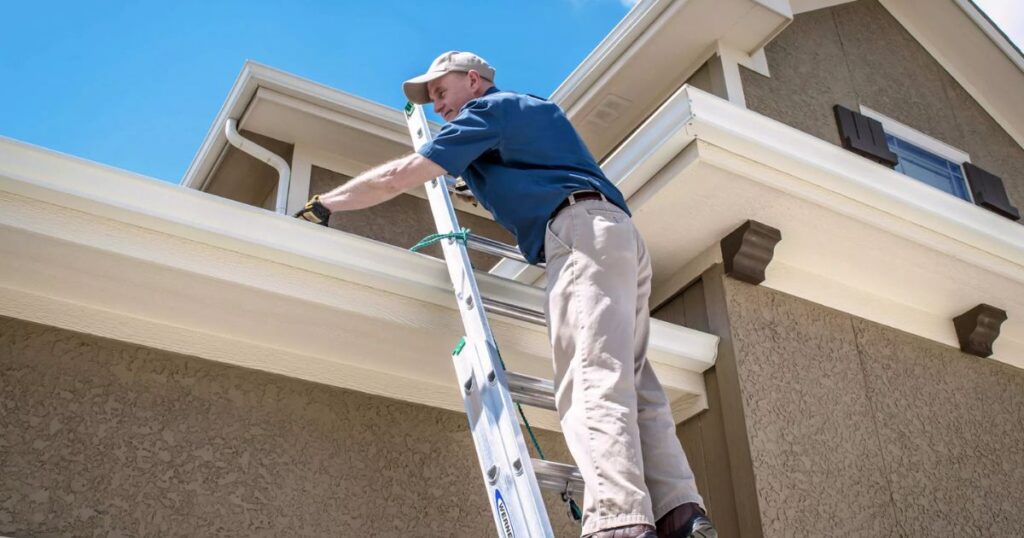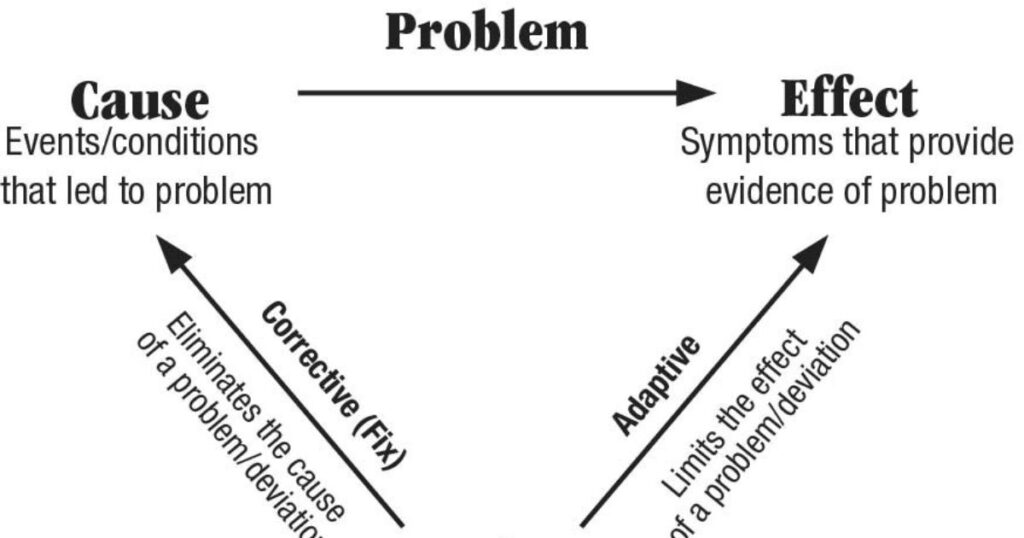In the world of real estate transactions, the term “COE” is frequently used, but what exactly does it mean? COE, or Close of Escrow, is a critical milestone in the home buying and selling process.
It marks the moment when all contingencies have been met, funds have been transferred, and ownership of the property officially changes hands. Understanding the significance of COE is essential for both buyers and sellers to navigate the intricate steps involved in a successful real estate deal.
Table of Contents
COE Stands for
COE is an abbreviation for “Close of Escrow,” which is the final stage of a real estate transaction. Escrow is a neutral third party that holds all funds, documents, and instructions necessary for the transfer of property ownership. The Close of Escrow signifies the completion of this process, wherein the buyer receives the keys to their new home, and the seller receives the agreed-upon sale proceeds.
Importance of COE
The Close of Escrow (COE) is a pivotal moment in any real estate transaction, as it represents the culmination of months of effort, negotiation, and paperwork. For buyers, COE marks the end of their home search and the beginning of their homeownership journey.
For sellers, it signifies the successful sale of their property and the transition to their next chapter. The importance of COE lies in its finality and the transfer of legal ownership, ensuring that all parties involved can move forward with confidence.
Popular Confusions
While the term “COE” is widely used in the real estate industry, there are some common confusions surrounding its meaning and implications. Some people mistakenly believe that COE and “closing” are interchangeable terms, when in fact, COE is a specific event within the broader closing process.
Additionally, the Close of Escrow is often confused with the “closing date,” which is the scheduled day when the transaction is expected to be finalized. It’s essential to understand these distinctions to avoid misunderstandings and ensure a smooth real estate experience.
What is Close Of Escrow?
The Close of Escrow (COE) is the final step in the escrow process, during which the transfer of ownership is officially completed. It typically occurs after all contingencies have been met, such as the completion of home inspections, appraisals, and the securing of financing. At the COE, the buyer and seller sign the necessary documents, funds are disbursed, and the keys are handed over to the new homeowner.
How to Make the Best Use of This Information

Understanding the significance of the Close of Escrow (COE) can help both buyers and sellers navigate the real estate process more effectively. For buyers, being aware of the COE timeline can aid in planning for moving preparations, utility transfers, and other logistical arrangements. Sellers, on the other hand, can use this knowledge to ensure they meet all necessary requirements and deadlines, ultimately facilitating a smoother transition to their next property or living situation.
What are common COE mistakes?
While the COE process is designed to be straightforward, there are some common mistakes that can occur. One frequent error is failing to thoroughly review and understand all documents involved in the COE, which can lead to misunderstandings or oversights.
Another mistake is underestimating the time required for the COE process, which can result in delays or missed deadlines. It’s crucial to work closely with your real estate professional and escrow officer to avoid these pitfalls and ensure a seamless Close of Escrow.
What happens during escrow works at the close of escrow?
During the escrow process, several key steps take place leading up to the Close of Escrow (COE). These include:
- Deposit of earnest money: The buyer typically provides an initial deposit, known as earnest money, to demonstrate their commitment to the purchase.
- Title search and clearance: The title company conducts a thorough search to ensure there are no outstanding liens, claims, or other issues that could affect the property’s ownership.
- Home inspections: The buyer typically hires professionals to inspect the property and identify any potential issues or necessary repairs.
- Appraisal: The lender orders an appraisal to assess the property’s fair market value and ensure it meets the loan requirements.
- Final loan approval: The lender reviews all documentation and finalizes the approval for the buyer’s mortgage.
Many buyers purchase home inspections during the escrow period.

One of the critical steps in the escrow process is the home inspection. Most buyers choose to have a professional home inspector evaluate the property’s condition, identifying any potential issues or necessary repairs.
This inspection typically occurs within the first few weeks of the escrow period and is a contingency that must be satisfied before proceeding to the Close of Escrow (COE). The home inspection allows buyers to make informed decisions about the purchase and negotiate any necessary repairs or adjustments to the sale price.
Appraisals
In addition to home inspections, another essential step in the escrow process is the appraisal. The lender typically orders an appraisal to assess the property’s fair market value and ensure it meets the loan requirements. The appraiser will evaluate various factors, including the home’s condition, location, and comparable sales in the area.
If the appraised value is lower than the agreed-upon purchase price, the buyer and seller may need to renegotiate or pursue alternative financing options. A satisfactory appraisal is typically a contingency that must be met before the Close of Escrow (COE) can occur.
Review All Escrow Documents
As the Close of Escrow (COE) approaches, it’s crucial for both buyers and sellers to thoroughly review all escrow documents. These documents may include the purchase agreement, loan documents, title reports, and any disclosures or addendums.
Carefully reviewing these documents can help identify potential issues or discrepancies before the COE, allowing for timely resolution and preventing delays or complications.
Buyers should tour the home one last time before closing.
Before the Close of Escrow (COE), it’s recommended that buyers conduct a final walk-through of the property. This walk-through allows buyers to ensure that the home is in the expected condition and that any agreed-upon repairs or improvements have been completed satisfactorily.
It’s also an opportunity to confirm that any included appliances, fixtures, or personal property are present and in working order. A successful final walk-through can provide peace of mind and help prevent any last-minute surprises before the COE.
Meet And Sign The Closing Documents

At the Close of Escrow (COE), both the buyer and seller will meet with the escrow officer to sign the closing documents. These documents typically include the deed, loan documents, and any necessary disclosures or addendums. It’s crucial for all parties to carefully review and understand each document before signing, as these documents legally transfer ownership of the property and outline the terms of the transaction.
There are many closing documents to sign.
The closing documents involved in the Close of Escrow (COE) can be extensive and may vary depending on the specific transaction and location. Some common documents include:
- Deed: This document officially transfers ownership of the property from the seller to the buyer.
- Loan documents: These include the promissory note, mortgage or deed of trust, and any other documents required by the lender.
- Settlement statement: Also known as the closing disclosure or HUD-1 statement, this document outlines all costs and fees associated with the transaction.
- Title documents: These documents confirm that the buyer is receiving a clear and marketable title to the property.
- Disclosures and addendums: These may include disclosures about the property’s condition, lead-based paint, or any other relevant information.
It’s essential for both parties to carefully review and understand each document before signing to ensure a smooth and legally binding Close of Escrow.
Also read this Post: REAL ESTATE AGENT CAREER QUIZ
What happens after closing the two escrow accounts?
Once the Close of Escrow (COE) is complete, several important steps take place:
- Funds and documents are disbursed: The escrow officer ensures that all funds, including the sale proceeds and any remaining buyer deposits, are properly disbursed to the appropriate parties. The signed documents, including the deed, are also recorded with the appropriate government entities.
- Keys are exchanged: The buyer officially receives the keys to their new property, granting them access and ownership.
- Utility transfers: The buyer typically contacts utility companies to transfer services, such as electricity, gas, and water, into their name.
- Move-in preparations: The buyer can now make arrangements for moving into their new home, while the seller prepares to vacate the property.
- Possession date: The purchase agreement will specify a possession date, which is the date the buyer can officially take occupancy of the property.
Difference between the Close of Escrow and the Closing date
While the terms “Close of Escrow” (COE) and “closing date” are often used interchangeably, they refer to slightly different aspects of the real estate transaction process.
The Close of Escrow (COE) is the specific event when the transfer of ownership is officially completed, and all necessary documents are signed and recorded. It marks the culmination of the escrow process and the point at which the buyer receives the keys to the property, and the seller receives the sale proceeds.
On the other hand, the closing date is the scheduled day when the COE is expected to occur. It is the target date agreed upon by all parties involved in the transaction, including the buyer, seller, lenders, and escrow company. The closing date is typically set several weeks or months in advance to allow sufficient time for all contingencies to be met, such as securing financing, completing inspections, and resolving any outstanding issues.
It’s important to note that while the COE and the closing date are often the same, they may not always align. Delays or unforeseen circumstances can sometimes cause the COE to occur on a different date than the originally scheduled closing date. For example, if there are issues with the loan approval process or unexpected repairs needed, the COE may be postponed to a later date.
In summary, the Close of Escrow (COE) is the specific event when the ownership transfer is finalized, while the closing date is the targeted date on which the COE is expected to take place. Understanding the distinction between these two terms can help ensure a smooth and well-coordinated real estate transaction process.
Possible Problems That Could Occur At The Close Of Escrow?

While the Close of Escrow (COE) is designed to be a straightforward process, there are certain potential problems that can arise and cause delays or complications. Some common issues that may occur at the COE include:
- Documentation errors: Mistakes or discrepancies in the closing documents, such as incorrect legal descriptions, misspelled names, or missing signatures, can halt the COE process until these errors are corrected.
- Funding delays: If the buyer’s lender experiences delays in providing the necessary funds or if there are issues with the wire transfer of funds, the COE may need to be postponed.
- Title issues: Unexpected liens, encumbrances, or other title issues can prevent the transfer of clear and marketable title to the buyer, delaying the COE until these matters are resolved.
- Last-minute repairs or negotiations: If the final walk-through reveals unexpected issues or a need for additional repairs, the buyer and seller may need to renegotiate terms or postpone the COE to address these concerns.
- Missed contingency deadlines: If any contingencies, such as inspections or appraisals, are not met within the agreed-upon timeframes, the COE may need to be delayed until these requirements are satisfied.
- Buyer or seller delays: Unforeseen personal circumstances, such as illness, travel delays, or other emergencies, can prevent one or both parties from attending the COE signing, necessitating a rescheduling.
While these potential problems can be frustrating, working closely with experienced real estate professionals, such as agents, lenders, and escrow officers, can help mitigate risks and ensure a smooth COE process. Additionally, having contingency plans in place and maintaining open communication can help address any issues that may arise and keep the transaction on track.
Have you ever wondered what makes Starbucks coffee so special? The secret lies in the quality of their beans. Starbucks is committed to finding the best coffee beans from around the world. This ensures that every cup of coffee you enjoy is rich, flavorful, and satisfying. Let’s dive into how they achieve this through ethical sourcing and global partnerships.
Tips to Ensure a Successful Final Walk-Through
The final walk-through is a crucial step in the real estate transaction process, typically occurring just before the Close of Escrow (COE). This is the buyer’s last opportunity to ensure that the property is in the expected condition and that any agreed-upon repairs or improvements have been completed satisfactorily. To help ensure a successful final walk-through, here are some tips:
- Schedule the walk-through well in advance: Coordinate with the seller and your real estate agent to schedule the final walk-through at a convenient time, allowing for ample time to address any potential issues before the COE.
- Bring the necessary documentation: Have copies of the purchase agreement, inspection reports, and any repair addendums or requests on hand to reference during the walk-through.
- Conduct a thorough inspection: Systematically go through each room and area of the property, checking for any damage, missing items, or incomplete repairs. Be sure to test appliances, fixtures, and systems to ensure they are functioning properly.
- Document any issues: If you identify any problems or discrepancies during the walk-through, document them thoroughly with notes and photographs. This documentation can be valuable if negotiations or adjustments need to be made before the COE.
- Involve professionals as needed: If you have concerns about specific areas or systems, consider bringing in professionals, such as contractors or inspectors, to provide expert opinions and assessments.
- Address concerns promptly: If any significant issues arise during the walk-through, address them immediately with the seller and your real estate agent. Timely communication and resolution can prevent delays or complications at the COE.
- Confirm the property is ready for occupancy: Ensure that the property is ready for you to take possession, with all agreed-upon repairs completed, utilities transferred, and any necessary cleaning or preparations done.
By following these tips and conducting a thorough final walk-through, you can have greater confidence in the condition of the property and a smoother transition to homeownership at the Close of Escrow.
FAQ’s
What does COE stand for in real estate?
COE stands for “Close of Escrow” in the real estate industry.
What is the importance of COE in real estate transactions?
The Close of Escrow (COE) is a crucial milestone in real estate transactions, as it marks the official transfer of property ownership from the seller to the buyer, completing the sale process.
When does COE typically occur in a real estate sale?
The COE typically occurs after all contingencies, such as inspections, appraisals, and financing, have been met and all necessary documents have been signed and funds disbursed.
How does COE differ from the closing date in real estate?
The closing date is the scheduled target date for the COE to occur, while the COE is the specific event when the ownership transfer is finalized and the transaction is complete.
Is COE a legal requirement in all real estate transactions?
Yes, the Close of Escrow is a legal requirement in most real estate transactions, as it officially transfers ownership and ensures all parties fulfill their contractual obligations.
Who is responsible for coordinating COE in a real estate deal?
The escrow officer, often from a third-party escrow company, is responsible for coordinating and facilitating the Close of Escrow process, ensuring all necessary steps are completed.
What documents are involved in the COE process?
Common documents involved in the COE process include the deed, loan documents, settlement statements, title documents, and various disclosures and addendums.
Can COE be delayed or extended? If so, why?
Yes, the COE can be delayed or extended due to various reasons, such as issues with financing, unexpected repairs needed, title problems, or missed contingency deadlines.
Are there any consequences for not meeting the COE deadline?
Failure to meet the COE deadline can result in consequences like the loss of earnest money deposits, potential legal action, or the cancellation of the real estate transaction altogether.
How long does the COE process usually take in real estate?
The length of the COE process can vary, but it typically takes several weeks to a few months from the initial contract signing to the final closing, depending on the specific circumstances of the transaction.
